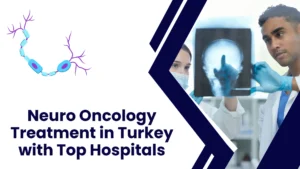1. Understanding Cartilage Damage and the Need for Regeneration
Articular cartilage is the smooth, protective tissue covering the ends of bones in a joint. **Significantly**, it lacks a direct blood supply, giving it a limited ability to heal itself. **Consequently**, damage from trauma, wear-and-tear (osteoarthritis), or sports injuries often leads to chronic pain and reduced mobility. When this occurs, patients often look for innovative solutions beyond conventional treatments.
**In fact**, cartilage damage is a leading reason many individuals consider major procedures like a total knee replacement (TKR). **Therefore**, we need effective treatment options. These are essential to prevent the progression of joint degeneration. Fortunately, the field of orthopedic medicine is rapidly advancing, offering new possibilities for tissue repair.
Limitations of Traditional Approaches
Traditional treatments, such as arthroscopic debridement or microfracture, aim to relieve symptoms. **However**, they often result in a less durable fibrocartilage repair. While these methods offer relief, they don’t always fully restore the joint’s original strength and resilience. **Conversely**, regenerative medicine focuses on stimulating the body to create new, healthy tissue. **For this reason**, many are exploring alternatives like **Knee Cartilage Stem Cell Treatment**. This treatment aims to achieve true, long-lasting biological repair.
2. The Promise of Knee Cartilage Stem Cell Treatment
**Knee Cartilage Stem Cell Treatment** utilizes the body’s own healing mechanisms. **Specifically**, doctors typically harvest Mesenchymal Stem Cells (MSCs) from the patient’s bone marrow or adipose (fat) tissue. They process these cells and then inject or surgically implant them into the damaged knee area. These cells possess the unique capability to differentiate into various cell types, including chondrocytes (cartilage cells). **Ultimately**, this process effectively creates a scaffold for true cartilage regeneration.
**Consequently**, transitioning to this cutting-edge therapy requires careful consideration of the surgeon’s expertise and the clinic’s protocols. We highly recommend reviewing our detailed checklist for choosing a surgeon or clinic abroad before committing to any treatment. **In addition**, when considering advanced orthopedic options, look at the broader context of joint care. This includes options like affordable hip replacement surgery options and various joint replacement surgeries.
Watch: Guus Hiddink’s Journey Back to the Field
Guus Hiddink’s Recovery: A Case in Point
The successful recovery of high-profile individuals, such as renowned football coach **Guus Hiddink**, brought significant public attention to the efficacy of **Knee Cartilage Stem Cell Treatment**. His return to an active professional life post-treatment serves as a powerful example of the technique’s potential. It can restore joint function, even for active senior professionals. **Significantly**, this recovery highlights that stem cell therapy is not just a theoretical concept. **Rather**, it is a viable, life-changing procedure. To ensure optimal results, always seek specialists; **for instance**, if you are looking for a trusted source, you might consider how to find the best orthopedic surgeon in Dubai.
3. Pros and Cons of Knee Cartilage Stem Cell Treatment
Before undergoing any treatment, understanding the balance of benefits and risks is crucial. **Therefore**, here is a breakdown for **Knee Cartilage Stem Cell Treatment**.
Advantages (Pros)
- Biological Repair: This promotes regeneration of native cartilage, which is superior to fibrocartilage repair.
- Minimally Invasive: The procedure often involves a simple injection or small arthroscopic procedure. This leads to faster recovery times compared to open surgery.
- Reduced Pain & Improved Function: It significantly lowers chronic knee pain and dramatically improves mobility.
- Autologous Source: Doctors use the patient’s own cells. This virtually eliminates the risk of immune rejection.
- Joint Preservation: It offers an opportunity to prevent or delay the need for major joint replacement surgery.
Disadvantages (Cons)
- Cost: Insurance plans may not cover this expensive treatment. **As a result**, some seek orthopedic medical tourism solutions.
- Variability in Results: Outcomes can vary depending on the patient’s age and the extent of damage. The specific cell source and processing technique used also affect results. (Source: National Institutes of Health (NIH))
- Regulatory Landscape: **Moreover**, the regulatory environment for stem cell therapies is still evolving globally.
- Rehabilitation Commitment: It requires a dedicated and often lengthy post-procedure rehabilitation program. This commitment ensures successful integration of the new tissue.
- Requires Specialized Expertise: Success depends heavily on the specialized skills of the orthopedic surgeon. The quality of the cell lab is also a major factor. (Source: Mayo Clinic Research)
4. Knee Cartilage Stem Cell Treatment vs. Traditional Surgery
**To help you** make an informed decision, here is a quick comparison of the most common treatments for significant knee cartilage loss.
| Treatment | Type of Repair | Recovery Time | Ideal Patient |
|---|---|---|---|
| Knee Cartilage Stem Cell Treatment | Regeneration (Hyaline-like cartilage) | Moderate (6-12 months for full activity) | Younger, active patients with focal defects. |
| Microfracture | Repair (Fibrocartilage) | Short-to-Moderate (3-6 months) | Small, contained lesions; often a first-line therapy. |
| Total Knee Replacement (TKR) | Replacement (Metal/Plastic Implant) | Long (6-12 weeks initial, 1 year full recovery) | Severe, widespread osteoarthritis (Source: Johns Hopkins Medicine). |
5. Hypothetical Patient Journey: From Injury to Recovery
Consider **Alex**, a 45-year-old amateur marathon runner from Europe who suffered a Grade 3 cartilage tear. **Afterward**, initial conservative therapy failed. **Therefore**, Alex decided to pursue orthopedic treatment in Dubai, specializing in regenerative therapies.
- Diagnosis & Consultation: Alex consulted with an expert specializing in sports medicine surgery. MRI confirmed a focal defect.
- Treatment Selection: Based on his high activity level and age, the surgeon recommended **Knee Cartilage Stem Cell Treatment**. They used autologous fat-derived MSCs. (Source: Hospital for Special Surgery (HSS))
- The Procedure: The surgical team harvested the stem cells from his abdomen. They processed them and then injected them into the knee joint arthroscopically.
- Rehabilitation: Alex followed a strict, non-weight-bearing protocol for the first six weeks. **Then**, he transitioned to physical therapy focused on strength and range of motion. **Critically**, this careful post-op care is paramount, especially when considering medical travel, as our pre-travel resources and checklists for patients outline.
- Outcome: After one year, Alex reported zero pain. He successfully completed a half-marathon, confirming the powerful, regenerative capability of the treatment.
Seeking treatment abroad can be an excellent choice for affordability and expertise. You might choose to visit an internationally-recognized center in Iran or Turkey. **However**, it’s vital to research thoroughly and verify credentials.
6. Who is This For?
**Knee Cartilage Stem Cell Treatment** is not a universal solution. **Nonetheless**, it is often ideal for specific patient profiles.
- Patients with Focal Cartilage Defects: These are individuals with isolated, well-defined areas of cartilage loss, rather than widespread, end-stage osteoarthritis.
- Active Individuals Under 55: This includes younger, active patients who want a biological repair to return to sports and high-impact activities.
- Those Seeking Joint Preservation: People wishing to avoid or significantly delay a major joint replacement like hip replacement surgery or TKR.
- Failure of Prior Treatments: Patients whose initial microfracture or debridement surgery was unsuccessful.
- Medical Travelers: Those exploring options through global medical tourism for access to top-tier technology or reduced costs.
Important Note: This treatment is generally less successful in patients with severe, end-stage, “bone-on-bone” osteoarthritis or significant joint misalignment.
7. Frequently Asked Questions (FAQ)
1. What is the key difference between stem cell and PRP knee treatment?
Stem cell therapy introduces actual, live cells (MSCs). These are capable of differentiating into new cartilage tissue. **In contrast**, PRP (Platelet-Rich Plasma) primarily delivers growth factors. These growth factors signal existing cells to heal and reduce inflammation. Stem cell treatment is considered more regenerative.
2. Where are the stem cells harvested from?
Orthopedic professionals most commonly harvest stem cells for use from the patient’s own bone marrow (Bone Marrow Aspirate Concentrate, or BMAC). They also take them from adipose (fat) tissue, often removed from the abdomen or flank.
3. Is the procedure painful?
The harvesting procedure typically involves local anesthesia, and patients generally tolerate it well. The injection or surgical implantation into the knee may cause temporary soreness. Medical professionals manage this with standard pain relief medication.
4. How long does the Knee Cartilage Stem Cell Treatment take?
**In fact**, the surgical team often completes the entire procedure in a single day. This includes harvesting the cells, processing them in the lab, and injecting them back into the knee. Complex surgical applications may require two days.
5. How long do the results of this treatment last?
**Although** researchers still compile long-term data, clinical studies suggest the benefits can last for many years. Results often span five to ten years or more. This longevity depends especially on the new tissue integrating successfully and the patient adhering to rehabilitation.
6. Can this treatment cure severe arthritis?
It is primarily intended to treat focal defects or early-stage to moderate arthritis. It is a joint-preservation technique and not typically a “cure” for severe, end-stage osteoarthritis. **Consequently**, severe cases usually require a total joint replacement. **Therefore**, choose your specialist carefully.
7. What is the rehabilitation protocol after the procedure?
Rehabilitation is critical. It involves an initial period of limited or non-weight bearing (4–6 weeks). This is followed by several months of progressive physical therapy. The therapy focuses on regaining strength, flexibility, and proper movement patterns.
8. What risks are associated with using my own cells?
Since doctors use **autologous cells** (the patient’s own), the risk of immune rejection or disease transmission is virtually non-existent. The main risks are those associated with any injection or minor surgery. **These include** infection or temporary nerve irritation. (Source: Nature Reviews Rheumatology)
9. Is this type of treatment commonly available through Orthopedic Surgery departments globally?
**Consequently**, specialized orthopedic and sports medicine centers worldwide increasingly offer **Knee Cartilage Stem Cell Treatment**. This includes leading facilities accessible through WMedTour’s global guide.
10. Are there any restrictions on my activity level post-recovery?
Following full recovery and rehabilitation (typically 9-12 months), most patients can resume their previous active lifestyles. This includes light running and sports, which is the primary goal of joint preservation therapies.
11. What initial tests are required before being approved for the treatment?
A high-resolution MRI of the knee is essential. This test confirms the size and location of the cartilage defect. **Furthermore**, blood tests may also be required to ensure the patient is in good health for the procedure.
12. How does this compare to knee replacement options in terms of cost?
While the cost of **Knee Cartilage Stem Cell Treatment** can be significant, it is generally less than the total cost of a major surgical procedure like TKR. This difference is especially true when considering the shorter hospital stay and recovery time. Pricing varies by location.
13. Is the procedure covered by health insurance?
Coverage is highly variable. Many insurance providers still classify regenerative therapies as ‘experimental’ or ‘investigational’. **Thus**, patients often pay out-of-pocket, which is a key driver for seeking care in medical tourism destinations. Always check your plan.
14. What are the global hubs for this treatment?
Leading research institutions in the US and Europe are recognized for advanced protocols. Specialized medical tourism hubs in places like Turkey and Dubai also offer **Knee Cartilage Stem Cell Treatment**.
15. How do I start exploring this option?
Begin by consulting a specialized orthopedic surgeon who is experienced in regenerative medicine. **Additionally**, you can explore our directory of orthopedic specialists and contact us for a personalized assessment.




